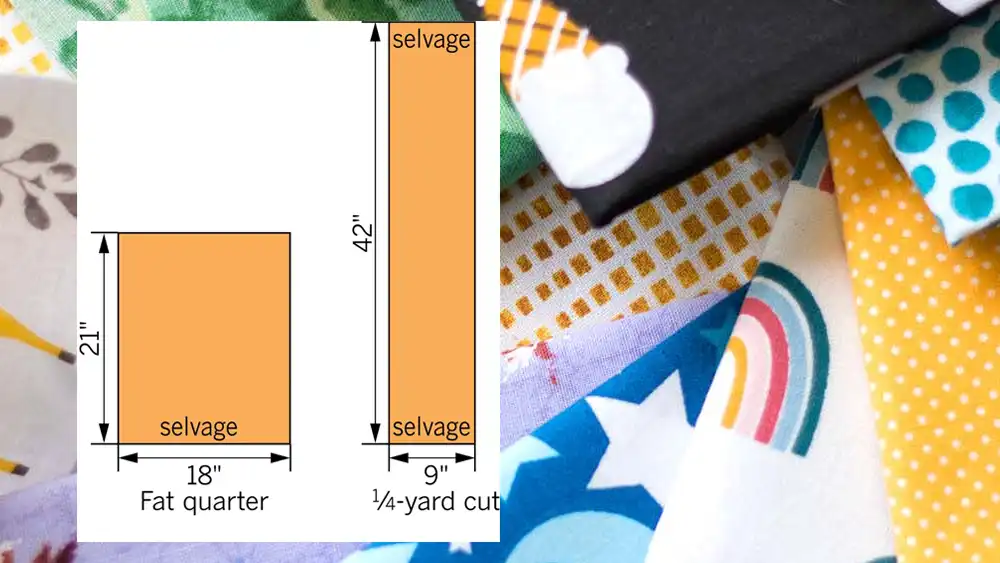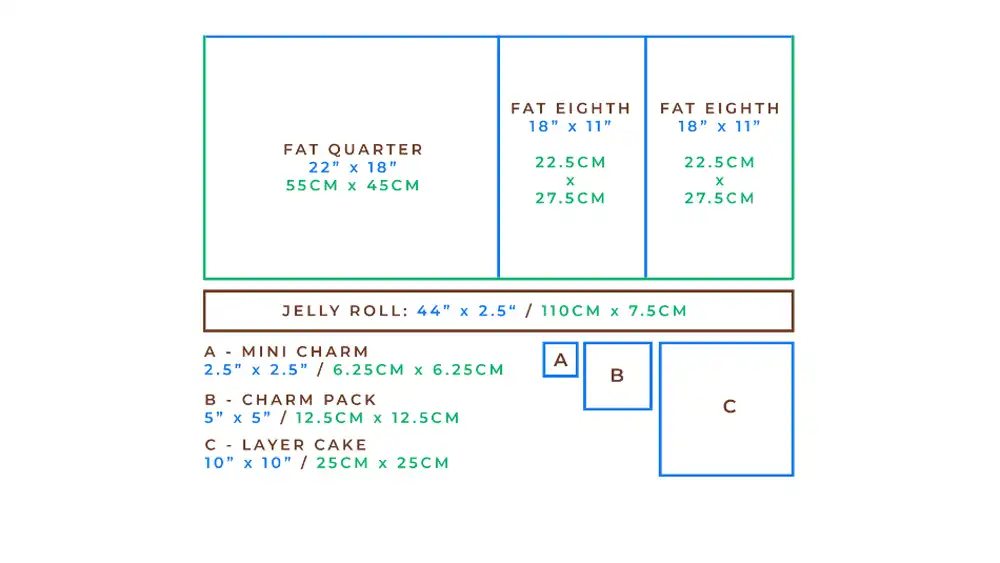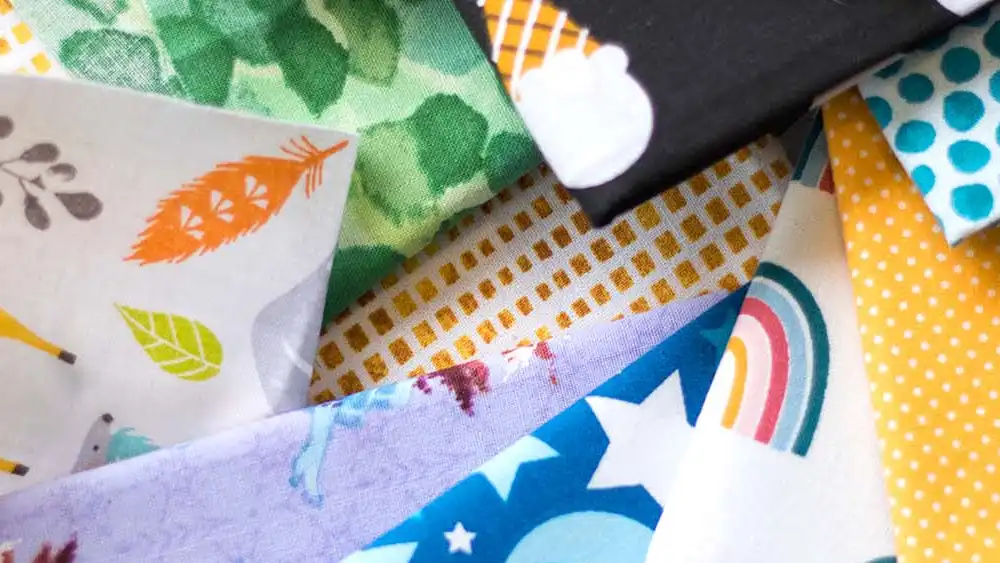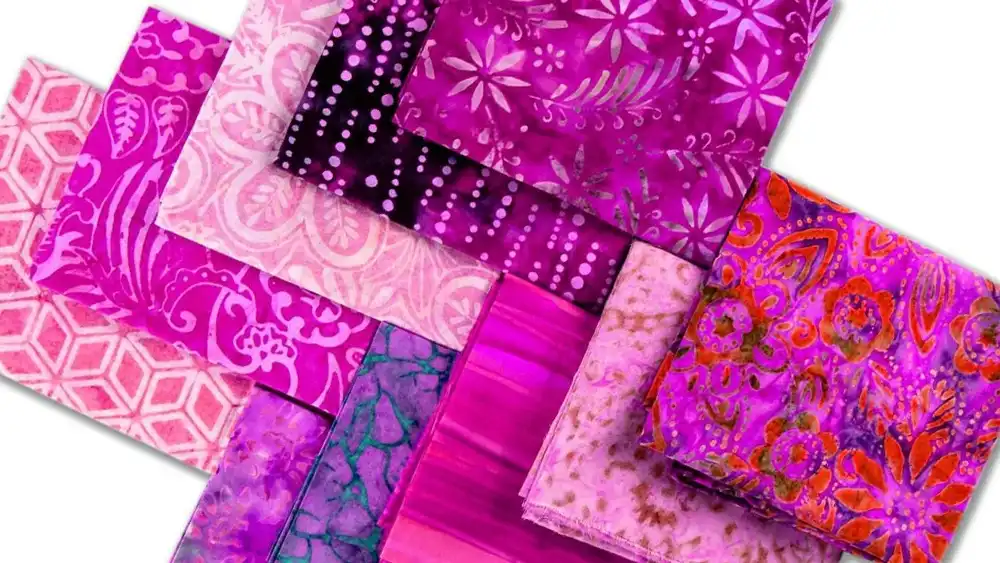Have you ever wondered what is a Fat Quarter in Quilting Fabric? If you’ve seen these cute little bundles of fabric at your local quilt shop but weren’t sure what they actually are or how to use them, you’re not alone. Don’t worry – I’ve got you covered!
A Fat Quarter is a popular fabric cut in the quilting world, and understanding it can really open up your quilting possibilities. Whether you’re just starting out or looking to refine your fabric stash, knowing about Fat Quarters will definitely help.
In this guide, I’ll break down exactly what a Fat Quarter is, how it’s different from other fabric cuts, and how you can make the most of this versatile quilting fabric. From quick tips on using Fat Quarters in your projects to exploring how they can save you time and money, I’ll cover it all. Ready to learn why Fat Quarters are so loved by quilters? Let’s dive in!
What is a Fat Quarter in Quilting Fabric?

A Fat Quarter is a fabric cut that measures 18 inches by 22 inches, which is roughly one-quarter of a yard. It’s a popular choice for quilters because of its size and versatility, offering more usable fabric compared to other cuts. You can use it for small quilting projects, patchwork blocks, and even appliqué.
The difference between a Fat Quarter and a regular quarter yard cut lies in their dimensions. A regular quarter yard measures 9 inches by 44-45 inches, which is longer but narrower. In contrast, a Fat Quarter is wider and shorter, providing more flexibility for cutting pieces that require a wider width, especially for quilt blocks and smaller fabric designs.

The Origins and History of Fat Quarters
Fat Quarters became popular in quilting circles in the 1970s. Before then, fabric was typically sold in long, narrow cuts, which limited quilters’ options. As quilting grew in popularity, especially among hobbyists, Fat Quarters offered a more practical solution for small projects and scrap quilts. They gave quilters more usable fabric and allowed them to work with a variety of prints and colors without needing large amounts.
The term “Fat” refers to the width of the fabric rather than its thickness. In a Fat Quarter, the fabric is cut wider (18 inches) and shorter (22 inches) compared to the regular quarter-yard cut. This shape allows quilters to have more flexibility when cutting pieces from their fabric, making it perfect for smaller quilt blocks and intricate patterns. The “fat” part simply means it’s a fatter, more usable portion of fabric.
Why Choose Fat Quarters?
Fat Quarters are perfect for stash building without wasting fabric. Since they are 18 inches by 22 inches, they give you enough fabric to work with without needing to buy large yardages.
You get a generous cut that allows you to make the most of your fabric, whether you are making small quilt blocks or experimenting with different designs. This space-efficient cut helps you build a diverse fabric stash without taking up too much storage space.
Fat Quarters are also ideal for small projects. They work perfectly for small quilt blocks, appliqué, or other DIY fabric projects. If you want to make a mini quilt, a pillow cover, or even a fabric pouch, a Fat Quarter has more than enough material for these tasks. Their manageable size lets you try new techniques without feeling overwhelmed by a lot of leftover fabric.
If you love variety, Fat Quarters give you easy access to a wide range of colors and patterns in small amounts. You can explore different prints, textures, and color schemes without committing to a full yard. This makes it simple to experiment with bold, unique fabrics in your quilting or sewing projects. Plus, you can create eye-catching combinations with ease, adding personality to your designs.
How Are Fat Quarters Used in Quilting?
Fat quarters are an incredibly versatile and popular choice for quilting, thanks to their convenient size and wide range of fabric options. You can use them in many quilt patterns and projects, making them ideal for quilters of all skill levels. Let’s dive into some common ways to use fat quarters and tips for cutting them.
1. Popular Fat Quarter Quilt Patterns:
Quick Quilts: Fat quarters are perfect for quick quilts because they save you time and allow you to create simple designs with minimal cutting. These quilts usually focus on large blocks, making it easy to show off your fat quarter’s patterns and colors. Whether it’s a simple patchwork design or a strip quilt, fat quarters make creating a fast quilt easy and fun.
Charm Packs and Jelly Rolls: While charm packs and jelly rolls come pre-cut in 5″ squares and 2.5″ strips, fat quarters serve a similar purpose. They give you more fabric to work with, allowing you to create larger blocks or more intricate designs. Fat quarters are especially great for projects that require more variety and larger pieces, like table runners, baby quilts, or lap quilts.
Patchwork Quilts: If you’re into patchwork quilts, fat quarters are your friend. They provide just the right amount of fabric to cut various shapes and create a beautiful patchwork design. Whether you’re using squares, triangles, or strips, you’ll find that fat quarters offer the perfect balance of fabric for experimenting with patterns and colors.
2. Tips for Cutting Fat Quarters:
Cutting Fat Quarters: Tips & Measurements: When you cut a fat quarter, you’re starting with a piece of fabric that measures 18″ by 22″. If you need to cut smaller pieces from your fat quarter, use a rotary cutter, ruler, and mat for precision. If you want to cut multiple fat quarters, stack them and make sure all edges are lined up. You can then cut strips or squares based on your quilt pattern’s requirements.
Using Fat Quarters for Scrap & Mini Quilts: Fat quarters are a great option for scrap quilts because they give you a variety of fabric pieces without needing to buy large amounts of fabric. They are perfect for mini quilts, where smaller cuts of fabric work best for creating intricate designs in a compact space. With fat quarters, you have enough fabric to cut multiple small pieces, whether for borders, applique, or detailed patchwork.
Fat Quarter Bundles vs Individual Fat Quarters
When you’re building your quilting fabric stash, you may wonder whether to buy fat quarter bundles or individual fat quarters. Both have their advantages, depending on your needs. Let’s break down the differences and see which option might be best for your next quilting project.
Fat Quarter Bundles:
Fat quarter bundles are a great option when you need coordinated fabric for a specific project. These pre-selected sets often feature prints that follow a theme, like holiday designs, florals, or color schemes.
Buying a bundle is a time-saver, especially if you’re working on a larger project. Plus, bundles often come at a discount, so you save money when purchasing in bulk. It’s perfect for quilters who want to ensure their fabrics complement each other without the hassle of mixing and matching individual pieces.
Buying Individual Fat Quarters:
If you’re looking to customize your stash, buying individual fat quarters gives you full control over your fabric selection. This approach allows you to pick specific colors, patterns, and textures based on your project’s needs.
Whether you’re after a bold print or a unique color combination, buying individual pieces ensures you only get what you truly want. Plus, you won’t end up with extra fabrics that don’t fit your style, giving you more freedom to create a personalized quilt.
Tips for Using Fat Quarters Efficiently

If you’re diving into quilting, using fat quarters can be a game-changer. These small, versatile fabric pieces are great for a variety of projects, but to make the most of them, you need a solid strategy. Let’s talk about how to use fat quarters efficiently for your quilting creations.
Stash Building Tips:
Curating a balanced collection of fat quarters can help you tackle any quilting project with ease. Start by gathering a range of colors and patterns that complement each other. You don’t need to buy every fabric you see—focus on versatile prints like solids, florals, and geometric patterns that pair well with others.
Include a mix of light, medium, and dark shades to create contrast and depth in your quilts. This approach will ensure you always have fabric that fits your project, no matter what pattern you choose.
Using Scraps:
Leftover fat quarters and scraps don’t have to sit idle in your stash. These small fabric pieces can be used in future projects to add fun details and variety. Consider making scrappy quilts or using the pieces for appliqué, patchwork, or small accessories like coasters and pouches.
You can even piece together smaller fabric scraps to create new fat quarters. By incorporating scraps, you’re not only saving fabric but also creating unique, one-of-a-kind designs.
Mixing Fat Quarters with Other Fabric Cuts:
To add more flexibility to your projects, try combining fat quarters with other fabric cuts, like yardage or pre-cuts such as jelly rolls. Fat quarters are perfect for smaller quilt blocks, but larger projects might require more fabric.
Mixing and matching will give you a wider range of options, allowing you to scale your quilt without losing the charm of fat quarters. This combination of cuts helps you get the most out of your fabric while maintaining variety and style in your designs.
Common Mistakes When Working with Fat Quarters
Working with fat quarters can be a lot of fun, but there are a few common mistakes to watch out for. Let’s explore these so you can make the most of your fabric and avoid frustration.
Overestimating Fabric Needs:
It’s easy to get carried away when you see a beautiful collection of fat quarters, but buying too many can lead to excess fabric that you don’t actually need. Before purchasing, take time to plan your project. Measure the fabric requirements for your quilt or project, and be realistic about how much you’ll use. Fat quarters are great for smaller projects or scrap quilts, but you don’t always need one for every block. Be sure to buy just enough, and you’ll avoid wasting fabric and money.
Not Accounting for Shrinkage:
When working with fat quarters, it’s important to remember that fabric shrinks after washing. Many quilters forget to pre-wash their fabric before cutting, which can result in slight changes to the size of your quilt once it’s finished.
Always wash and dry your fat quarters before cutting them, especially if you plan to make a precise quilt. This will help ensure that your finished quilt retains the correct size and shape, avoiding any sizing issues later on.
Fat Quarter Alternatives

If you love working with Fat Quarters but are curious about other fabric cuts, you’re in luck! There are several great alternatives to consider, depending on your quilting needs and the size of your projects.
Fat Eighths and Half Yards:
If you’re looking for smaller or larger fabric cuts, Fat Eighths and Half Yards might be perfect alternatives. A Fat Eighth is half the size of a Fat Quarter, measuring 9″ by 22″. It’s ideal for smaller projects or when you just need a little bit of fabric.
A Half Yard, on the other hand, is 18″ by 44″ and gives you more fabric to work with, making it great for larger projects. Choosing between these depends on your fabric needs—Fat Eighths for small blocks and Half Yards for more flexibility in bigger projects.
Other Pre-Cut Fabric Options:
If you want more variety and convenience, pre-cuts like Jelly Rolls, Layer Cakes, and Charm Packs are great choices. Jelly Rolls are 2.5″ wide strips, perfect for strip quilts. Layer Cakes are 10″ squares, ideal for larger blocks, while Charm Packs contain 5″ squares—just the right size for smaller quilts or patchwork projects.
These pre-cuts come coordinated, making them great for quilt patterns where fabric variety is key. They save time and energy, helping you skip the cutting!
Conclusion:
Fat Quarters are an incredibly versatile and convenient fabric cut for quilters. Whether you’re working on small projects or larger quilt blocks, they provide a great balance between size and usability. The flexibility of Fat Quarters allows you to curate a collection with a variety of patterns and colors without wasting fabric, making them an essential staple in your quilting stash.
Now that you understand what a Fat Quarter is and how it can enhance your quilting, it’s time to get started! Head over to Fanda and choose your perfect Fat Quarter Fabric to bring your creative projects to life!
FAQ
What is a Fat Quarter in cm?
A Fat Quarter measures 45.72 cm by 55.88 cm. This is the metric equivalent of 18 inches by 22 inches. It’s a popular cut in quilting, offering quilters a more versatile piece of fabric than the traditional quarter-yard cut, making it easier to use for various projects, from quilts to home décor.
What is a Fat Quarter of Fabric Used For?
A Fat Quarter is used in a wide range of quilting and sewing projects. It’s perfect for small quilt blocks, appliqué, scrap quilts, and patchwork projects. Its size makes it ideal for projects that require a smaller amount of fabric but need more usable area than a traditional quarter yard. Fat Quarters are especially helpful for mixing and matching colors and patterns in your designs.
Why is it Called a Fat Quarter?
The term “Fat” refers to the width of the fabric cut, not its thickness. While a regular quarter yard of fabric is 9 inches by the width of the fabric (around 44-45 inches), a Fat Quarter is cut to 18 inches by 22 inches. This gives you a wider, shorter piece of fabric that’s easier to work with, especially for quilting, where square-shaped pieces are often needed.
What is a Fat Eighth?
A Fat Eighth is half the size of a Fat Quarter. It measures 9 inches by 22 inches (or 22.86 cm by 55.88 cm). This smaller cut is great for projects that don’t require as much fabric, like small appliqué pieces or mini quilts. It’s a more cost-effective option for quilters looking to try new patterns or colors without buying large amounts of fabric.
How Many Fat Quarters in a Yard?
There are four Fat Quarters in a yard. When you combine four Fat Quarters (each measuring 18 inches by 22 inches), you get one full yard of fabric. This is because four Fat Quarters, cut from the same bolt, still add up to a full yard, but in a more usable and manageable size for quilters.
How Many Fat Quarters in a Bundle?
A Fat Quarter bundle typically contains 10 to 40 Fat Quarters. The exact number can vary depending on the brand or set you choose. These bundles are pre-coordinated and often themed for specific quilt patterns or color schemes. They’re a great way to get a variety of fabrics without the hassle of picking individual pieces, and they help ensure your fabrics complement each other.
